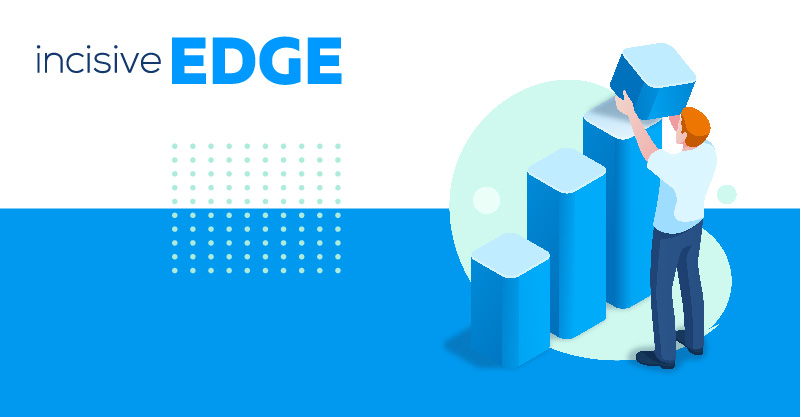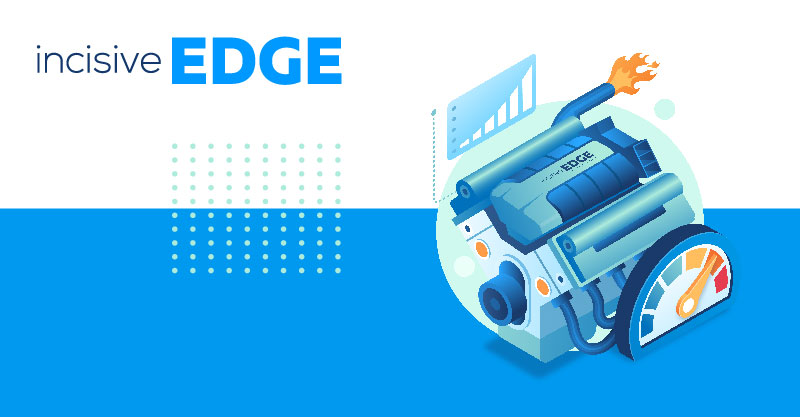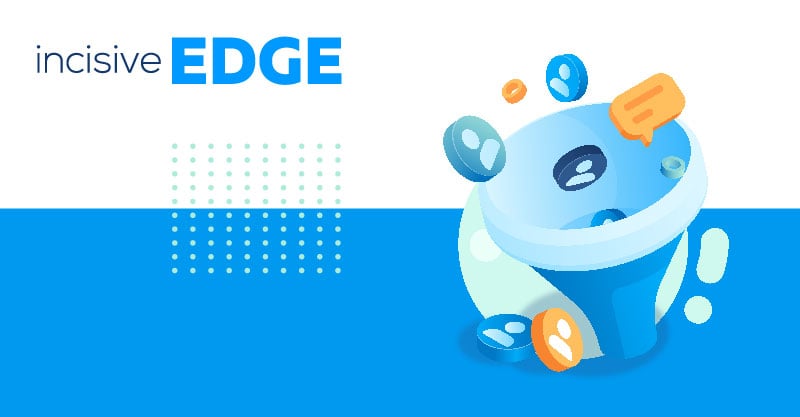Marketing automation is a nothing short of a godsend for busy marketers, as any inbound agency operating in 2017 will attest. And when it comes to serving up personalised content to your target audiences, in many cases it is only through the use of marketing automation software programs that such a thing is practical, if possible at all.
Check out the following articles to learn more about Marketing Automation:
- 5 Steps To Successful Marketing Automation For Startups
- What are the key benefits of Marketing Automation?
- Start Using These HubSpot Marketing Automation Features Now
The Impact of Personalised Content
A recent study by content personalisation platform OneSpot that surveyed 1,500 consumers to find out how personalisation impacts their perceptions and actions towards brands found the higher the relevancy of a piece of marketing content, the more favourable the impression the consumer forms of the brand that delivers it.
Indeed, 87% of the consumers surveyed said that personally relevant branded content positively influences how they feel about a brand.
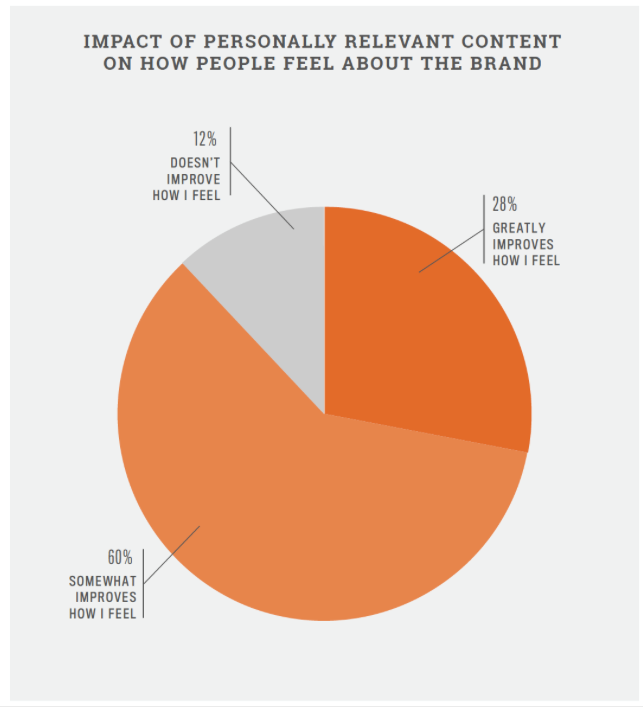
(Image source: onespot.com)
What’s more, the study also found that 72% of consumers believe that the brand itself is more relevant to them when it delivers personalised content, with 82% feeling more loyal to the brand, and 84% more trusting.
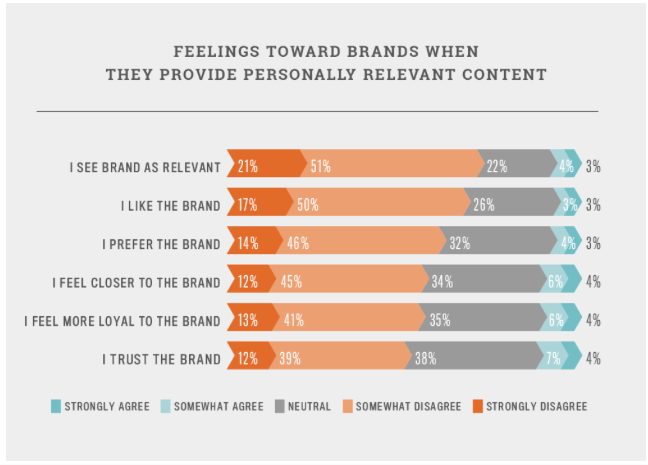
(Image source: onespot.com)
What these statistics essentially indicate is that the more a brand can personalize their content marketing efforts, the more inclined consumers are to make a purchase.
How to Use Marketing Automation to Serve Up Personalised Content
Personalisation has evolved significantly beyond the simple use of customers' first names in email correspondence. In today's dynamic landscape, businesses leverage marketing automation tools to seamlessly guide customers through their unique customer journey and deliver personalized content.
Today, using marketing automation, a good inbound agency is able to collect reams and reams of customer data and use it to personalize the whole buyer’s journey pretty much from start to finish.
Here’s how…
Dynamic Content
Also known as “smart content”, dynamic content is simply content on your website that is tailored to individual visitors’ specific needs.
A first-time visitor to your website will have different needs than a returning visitor. The first time someone visits, it's reasonable to assume that they will simply be in the investigative stage of the buyer's journey and have arrived to find out the basics of who you are, what your company does, and whether or not you will be able to provide the solution they are looking for. Content personalization, target audience, and the entire customer journey play pivotal roles in meeting these distinct visitor needs.
If they come back, however, then it’s likely that they are in the consideration stage of the journey – they liked what they saw during their initial visit, and have come back for more.
With marketing automation, it’s possible to serve up different versions of your website to different visitors based on, for instance, how many times they have paid a visit to your site.
For example, using HubSpot’s Content Optimisation System, the first time someone visits your site they would be served the “default” content of your homepage. It might look like this…
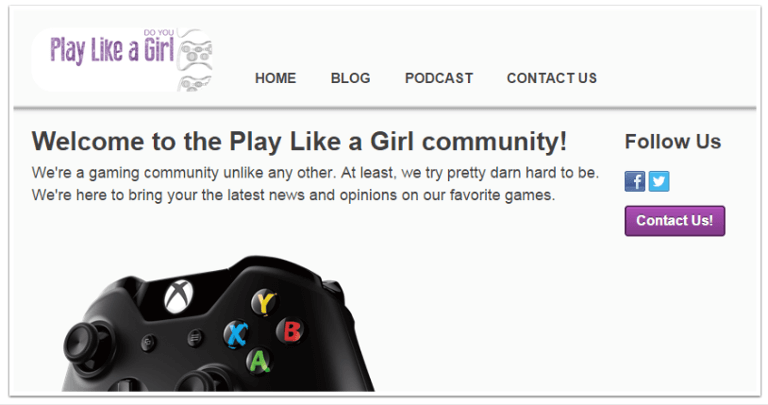
However, a returning visitor who has perhaps filled out a form and provided some personal information would be met with a more personalised greeting…
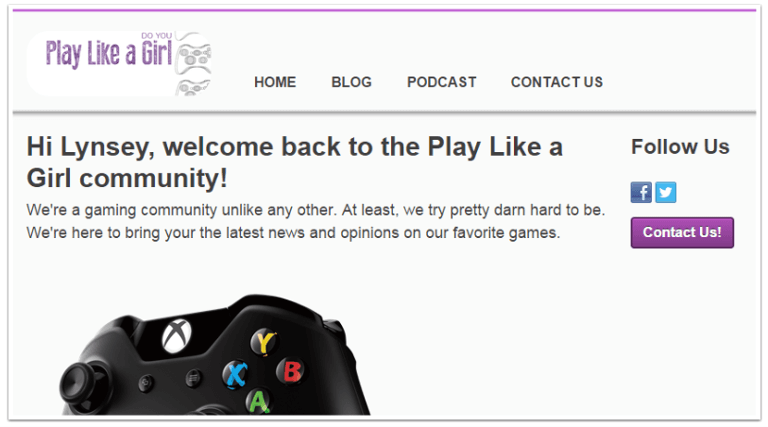
(Image source: knowledge.hubspot.com)
Such personalization is just simply more engaging, more relevant, indeed, more personable. It’s no wonder that OneSpot’s research found that 87% consumers felt better about brands that can deliver such personal touches – and with marketing automation it’s so simple to do.
Segmentation
Marketing automation begins with the collection of prospects' personal data. This process is typically facilitated through the use of forms, commonly found on landing pages that serve as gateways to specific, high-value content such as eBooks, webinars, or white papers. This data is invaluable for the marketing team, as it enables them to enhance the overall customer experience.
You’ll also collect personal details when you make sales, as well as via social media.
Once you have gathered this information, you will be able to segment your leads into categories, such as marketing qualified leads (MQLs), sales qualified leads (SQLs), customers and evangelists. (See our previous post ‘How to Determine Your Lead’s Lifecycle Stage’ to learn how different leads qualify for different stages.)
Your segments will encompass groups of targets who share common characteristics. Among them, some will require more nurturing, while others will be primed for a sales call. Additionally, you will have existing customers whom you may want to engage with through loyalty rewards, for instance. What's crucial is that a well-defined segmentation system is in place to effectively harness behavioural data in shaping your marketing campaigns. This empowers the creation of content that is not only relevant but also highly personalised for each cohort, all meticulously designed to deliver delight across every segment.
Your segments will contain groups of targets that have common characteristics – some will need more nurturing, others will be ready for a sales call, and still more will be existing customers whom you may want to target with a loyalty reward (for instance). What matters is that it is only by having a segmentation system in place that you will be able to create relevant, personalised content for each cohort – something specifically designed to delight each and every segment.
HubSpot, once again, provides a free CRM (Customer Relationship Management) system that can be used to create detailed lead profiles of your prospects and customers and segment them into personalised content marketing lists.
From here, your inbound agency can then use the marketing automation software to send out personalised emails and other marketing messages to these segments at specific times, and then track and analyse the results for future optimisation.
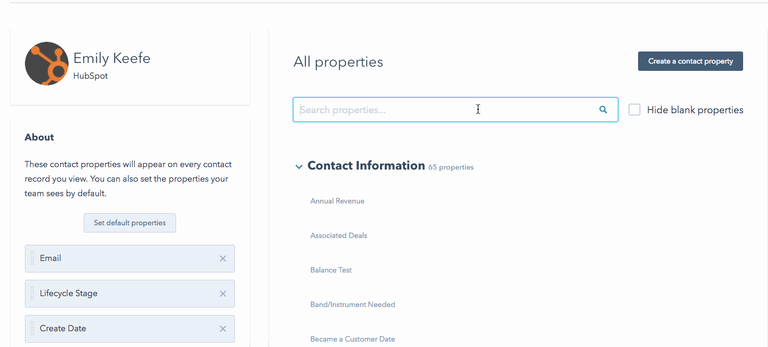
(Image source: knowledge.hubspot.com)
Remarketing
98% of your first-time visitors do not convert.
Remarketing is a marketing automation solution to bring these strays back to your site with personalised content.
Using pixel-based technology, when bounced visitors venture away from your website to other parts of the internet, an anonymous browser cookie will let your remarketing provider know where these prospects are, and therefore where to serve them your personalised content.
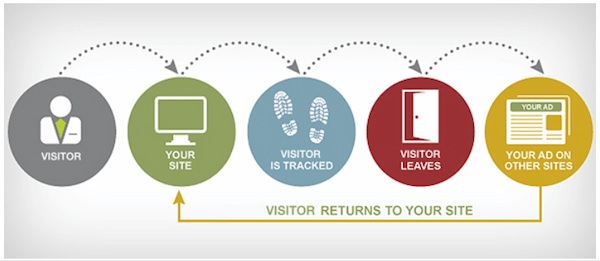
(Image source: linkedin.com)
You may, for instance, want to retarget bounced visitors on Facebook – perhaps with an eBook offer that explicates the money-saving value of your FinTech solution. Or maybe your SaaS subscribers would benefit from a video or infographic that walks them through the benefits of your premium service. With remarketing, you can do this – and specifically target specific customers on specific platforms with specific content as you do so.
It’s a powerful marketing automation tactic indeed – and one that a good inbound agency will be able to have up and running for you in no time.
Over to You
Personalised content marketing is one of the most effective strategies to make your brand feel relevant to your prospects and customers. With marketing automation, there are various tactics that are rendered simple to implement, yet highly effective – all you need is an inbound agency well-versed in the software and approaches to unlock the potential.
If you’re looking for such an inbound agency, you’ve found it. Get in touch with the inbound marketing automation experts here at Incisive Edge today to learn more.





